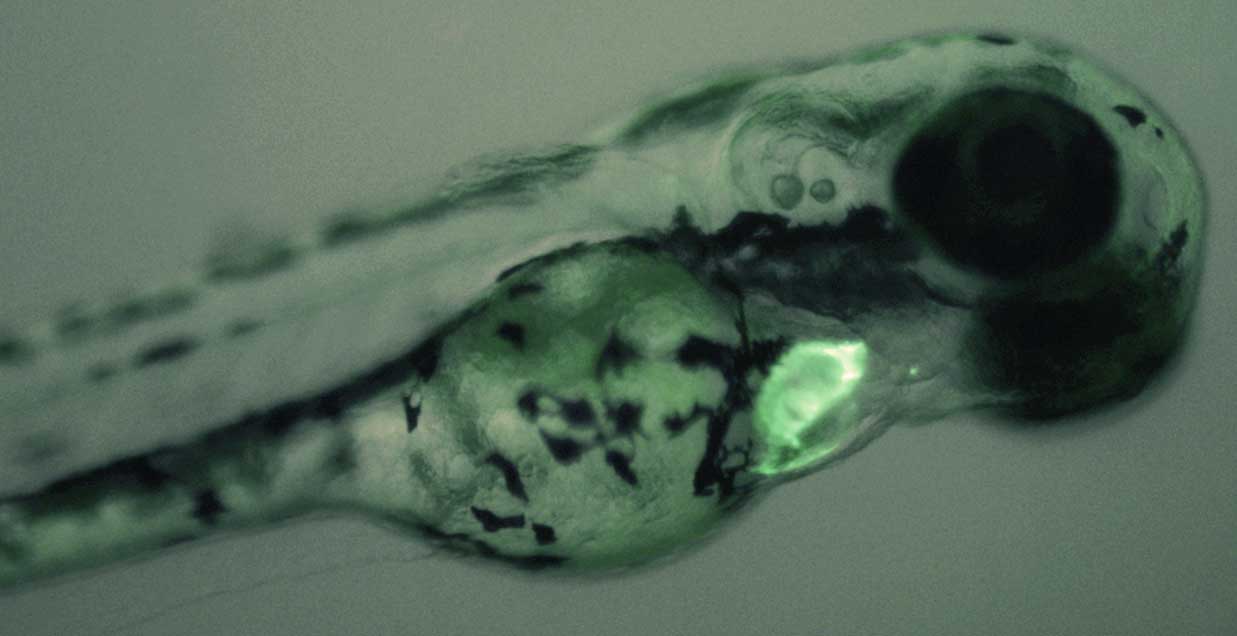3R

Despite its apparent differences the zebrafish shares a large amount of genetic material with humans making them extraordinarily useful for research purposes. Embryonic fish develop many features in common with humans, making them ideal for developmental and functional studies of eyes, ears, mouth and teeth; brain and spinal cord; oesophagus, intestine, pancreas, liver and bile ducts; blood and heart and muscle, cartilage and bone. The zebrafish genome has been sequenced and it is possible to create knock-out or knock-in animals much more easily than for rodents. Female zebrafish produce 50-300 eggs approximately every ten days and they are easy and cheap to house, so large numbers for reproducible results are easy to obtain.
Embryonic fish develop many features in common with humans, making them ideal for developmental and functional studies of eyes, ears, mouth and teeth; brain and spinal cord; oesophagus, intestine, pancreas, liver and bile ducts; blood and heart and muscle, cartilage and bone
A great deal of research is done using zebrafish embryos; external fertilization and easy manipulation brings down laboratory costs. They are transparent, making them ideal for a variety of imaging techniques. Drugs can also be administered directly to swimming water, further reducing costs.
Zebrafish have successfully been used in studies on the effects in later life of stress and exposure to in-utero cortisone, Alzheimer's disease, cardiac arrest treatments and congenital heart conditions. The ease of manipulating the genome makes them an ideal model for studying many types of cancer, except those for which they don't have homologous organs, and they have potential for personalized studies. Embryos are used for high-throughput screening of molecules with therapeutic effects.
The presence of the company ZeClinics at the CMCiB means that researchers have access, not only to the fully maintained facility, but to an expert scientific consultancy team to advise them on the best use of the models available, experimental design etc.
The use of zebrafish for many biomedical procedures is fully in line with the CMCiB 3R policy. It permits a reduction in the use of rodents and larger animals and the study of embryo fish without the need to euthanize adults, all with a substantial reduction in cost.
